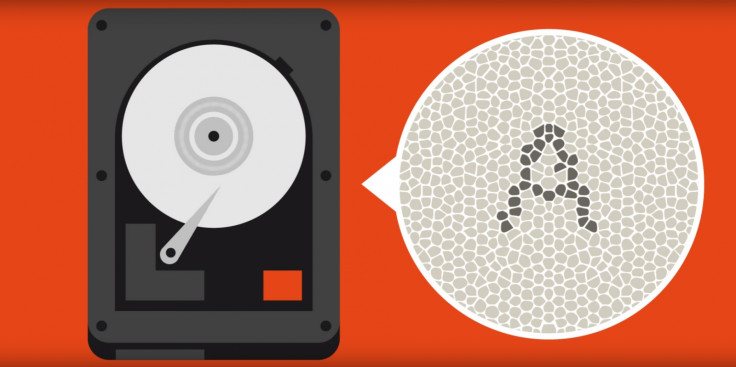Atomic memory device: All books ever written can be stored on stamp-sized hard drive
Dutch scientists create a tiny atom-based memory device that can store over 500 terabits per square inch.
Dutch scientists have found a way to store data more efficiently than ever before by creating an "atomic memory" device which encodes data atom by atom, meaning that all the books that have ever been written in the world could be stored on a cube the size of a postage stamp.
Researchers from the Kavli Institute of Nanoscience at Delft University of Technology (TU Delft) in the Netherlands have demonstrated a microscopic storage system that makes it possible to fit 1KB of data into a space that is less than 100 nanometres in width, which means that 500 terabits (62.5TB) would be stored per square inch.
In comparison, today the biggest hard drive that consumers can buy is a 16TB solid state drive (SSD) manufactured by Samsung, whereby each square inch stores only 1 terabit of data (0.13TB). Essentially, this means that if you were to get a cube the size of a postage stamp, you would be able to store every single book ever written in that one cube.
The scientists used a technology called Scanning Tunnelling Microscope (STM), which enables surfaces to be imaged at the atomic level. A sharp needle is used to probe the atoms of a surface, one by one and push the atoms around into place to create storage that is 500 times more efficient than any data storage solution we have today.

Currently, computers are coded using traditional bits, which is the small unit of data that usually has a single binary value of 0 or 1. When put together, the bits create code words such as 00, 01, 10 or 11 that can be used to programme the computer to perform specific commands. Similarly, the atomic memory device represents each bit as two possible locations on a copper surface.
Moving chlorine atoms about like a sliding puzzle
"You could compare it to a sliding puzzle," said Dr Sander Otte, head of the Otte Lab at TU Delft's Kavli Institute of Nanoscience, who led the study. "Every bit consists of two positions on a surface of copper atoms, and one chlorine atom that we can slide back and forth between these two positions. If the chlorine atom is in the top position, there is a hole beneath it – we call this a 1. If the hole is in the top position and the chlorine atom is therefore on the bottom, then the bit is a 0."

The bits are surrounded by rows of other chlorine atoms, except near the holes, and they keep each other in place, making the system of storage much more stable than packing loose atoms together. To create the atom memory device, the chlorine atoms are organised into 127 blocks of 64 bits, and each block contains a marker of holes to note the precise location of each block of data on the copper surface.
The markers act as a way for a computer to cross-check that the data has been stored correctly – for example, if a data block has been contaminated somehow, the marker will reflect this, and even if the copper surface where the data is encoded is not flawless, the researchers say the atomic memory solution can still be scaled up to store even huger amounts of data compactly.
However, the technology is still in its infancy and it will take quite a while for it to be adopted in data centres or commercially as atomic memory only works in very specific temperature conditions.
"In its current form the memory can operate only in very clean vacuum conditions and at liquid nitrogen temperature (77 K), so the actual storage of data on an atomic scale is still some way off. But through this achievement we have certainly come a big step closer," said Otte.
The paper, entitled "A kilobyte rewritable atomic memory" is published in the journal Nature Nanotechnology.
© Copyright IBTimes 2025. All rights reserved.






















